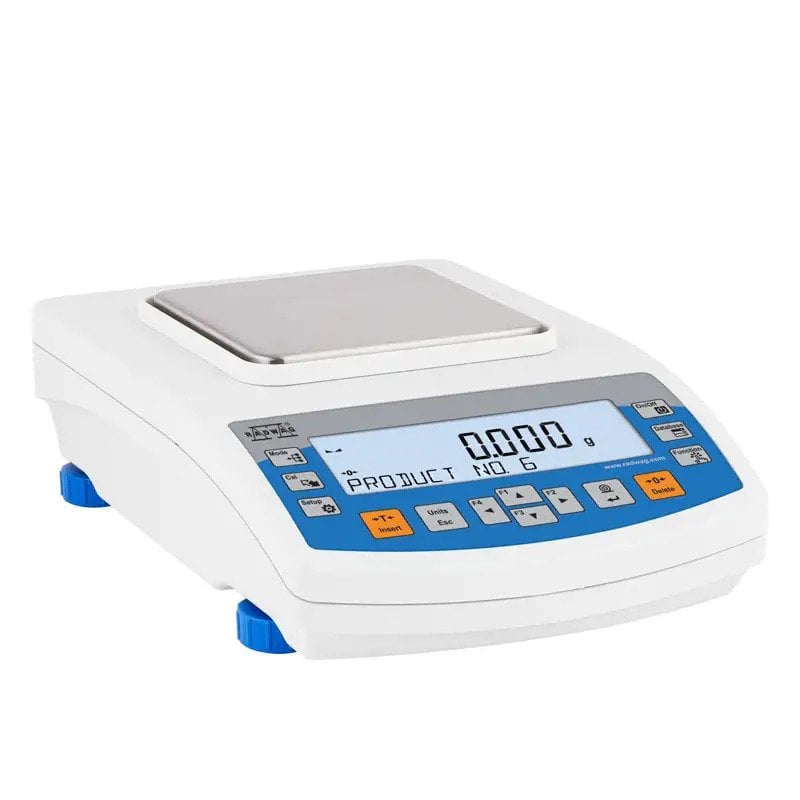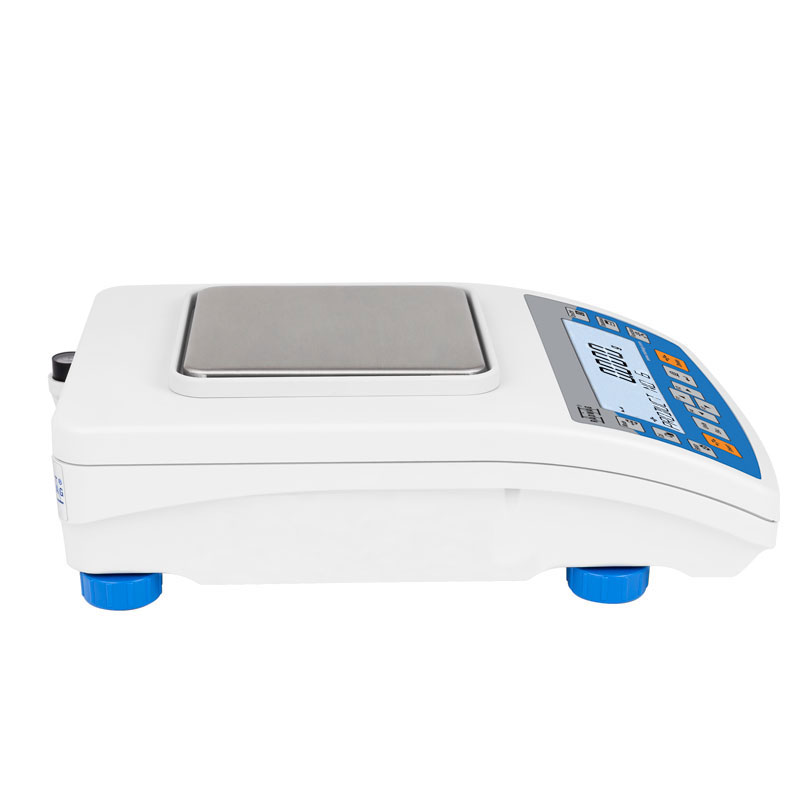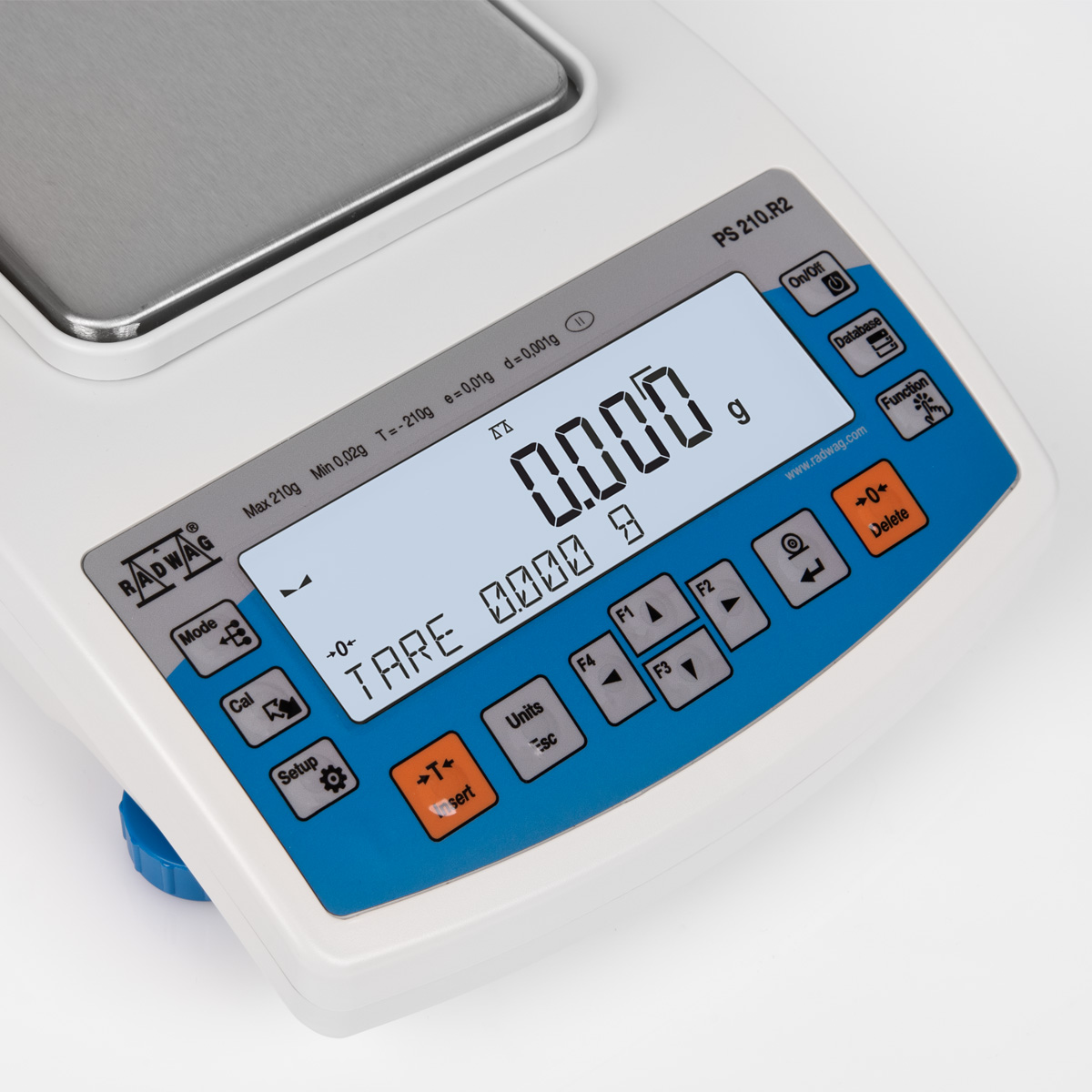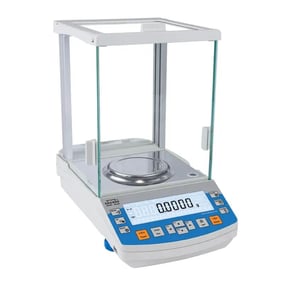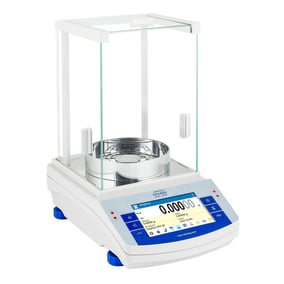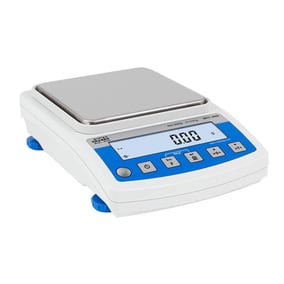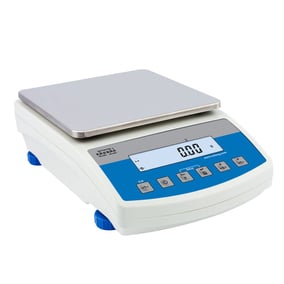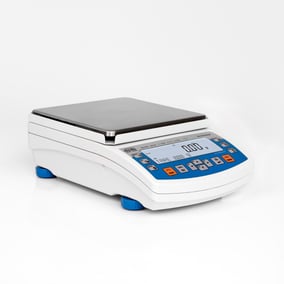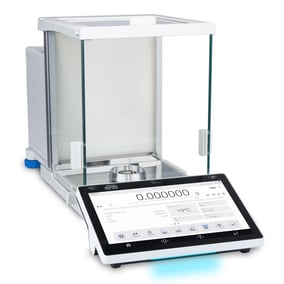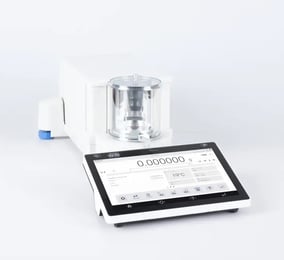PS R1 Series Precision Balance PS R1
PS.R1 series balances represent a new standard of precision balances. They feature a unique, readable LCD display, allowing a clearer presentation of the weighing result.
The display has a new text information line showing additional messages and data, e.g. product name or tare value.
Overview
The PS.R1 balances have pans in two dimensions: 128x128 mm or 195x195 mm. Balances with a smaller pan have a draft shield.
PS.R1 balances feature several communication interfaces: 2 x RS 232, type A USB, type B USB and optional Wireless Connection.
The housing is made of plastic, and the pan is made of stainless steel. The balances can weigh products out of the pan (under-pan weighing) - the load hangs under the pan.
DATABASES IN R SERIES BALANCES
The information system is based on five databases, allowing several users to work with several product databases, and the registered weighing results can be subject to further analysis.
The data is registered in 5 databases:
- users (up to 10 users),
- products (up to 1000 products),
- weights (up to 5000 weights),
- tares (up to 100 tares),
- ALIBI memory (up to 100 000 weights).
There are two data exchange directions within the system, thanks to a quick USB interface. New balances allow the importing and export of databases using USB pen drives.
Quick access to information
Direct access to functions and databases.
Database - direct access to databases
Function - direct access to the essential functions
F1 to F4 - programmable function and navigation keys on the menu
ALIBI memory
The used ALIBI memory is a secure data area and allows recording up to 100 000 weighed records. It ensures the security of constant data registers over an extended time period.
Technical Data
-
BrandRadwag
-
Capacity200g - 6100g
-
Electrical12V DC
-
Readability0.001 g - 0.01 g
Support & FAQs
At Thermoline, we strive to supply helpful customer support to ensure that you get the most out of our products. We are committed to providing whatever support our customers need, wherever they are in the world. If you can't find your solution in the below FAQs or Knowledge Base, please contact our friendly support team.
- What is laboratory balance?
A laboratory balance is a precision instrument used to measure the mass of an object or sample. It is designed for use in laboratory settings and is typically more accurate and precise than a standard scale.
A laboratory balance typically consists of a weighing platform, a load cell to measure the weight of the sample, and a digital display that shows the result. The load cell converts the force of gravity acting on the sample into an electrical signal, which is then displayed on the digital display.
- What is the difference between a scale and a balance?
While scales and balances are both used as weighing devices, their intended purposes vary slightly.
A scale is used to measure weight (weight = the force of gravity on an object on the scale), whereas a balance is used to measure mass. (mass = the amount of matter in an object). A scale is a general-purpose measuring instrument that gives an estimate of the weight of an object. They typically use spring mechanisms to measure weight and have a lower precision compared to laboratory balances.
A balance, on the other hand, is a highly precise instrument used in laboratory settings. Balances use load cells to measure weight and provide a much higher level of accuracy compared to scales. The readout on a balance is usually digital, and the results can be displayed in various units of measurement, including grams, kilograms, and ounces.
- What are the appropriate conditions for a laboratory balance?
- You should first install the balance in a workroom free of vibrations and shakes and where there is no air draft or dust. You want to ensure that the ambient temperature is between +15°C and +35°C while ensuring that the relative humidity is not above 80%. Place the balance either on a robust-design table or on a wall bracket that is both distant from heat sources and insusceptible to vibrations.
- What is the difference between a precision balance and an analytical balance?
Precision balances and analytical balances are both types of laboratory balances, but they differ in their level of precision and the types of applications for which they are used.
A precision balance is a type of laboratory balance that provides accurate measurements within a range of ±0.1 to ±0.01 grams. Precision balances are typically used for routine weighing tasks, such as determining the mass of chemicals for routine laboratory experiments, or for checking the weight of small parts in industrial settings.
An analytical balance, on the other hand, is a highly precise type of laboratory balance that provides accurate measurements within a range of ±0.0001 grams. Analytical balances are used for more demanding applications, such as determining the mass of samples for highly accurate chemical analysis, or for weighing minute quantities of substances in medical and pharmaceutical research.

